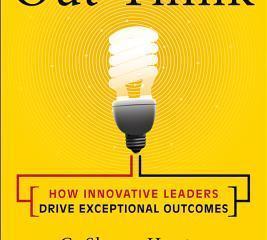With the end of the Mad Men television series, I wanted to get another jolt of those good old days, so I read a couple of books on David Ogilvy, often called the father of advertising.
The two made me think about the crazy growth projections for IoT (Internet of Things), IoE (Internet of Everything), big data and the wild rush by marketing to own all of it in their respective companies.
The goal?
Be the first one to put his/her product offer in front of the consumer just before he/she is ready to buy something … anything.
According to Mary Meeker of KPCB (formerly known as Kleiner Perkins), it’s really bigger than her annual presentation (196 slides) and gonna’ be huge:
• Internet of people: There were 2.9 billion people using the Internet in 2014, or 39 percent of the total world population. That’s up from 0.06 percent of the world population on the Internet 20 years ago.
• We’re mobile: About 5.2 billion people in the world now own a mobile phone (2.1 billion smartphones), compared to 80 million in 1995. That’s 73 percent of the global population now versus 1 percent back then.
• Slower growth: The overall increase in Internet use grew by 8 percent last year, compared to 10 percent growth in 2013. Smartphone subscriptions grew by 23 percent in 2014 compared to 27 percent the year before. Consumer Internet use rose 21 percent last year, down from 24 percent growth in 2013.
• Video growth: As Cisco likes to continually tell us, video makes up most of the Internet traffic – 64 percent last year, compared to 62 percent the year before. Last year, it was 55 percent of mobile traffic, compared to 52 percent the year before.
• Hit the button: Mobile commerce is gaining steam as people can buy something wherever, whenever they want; changing the ground rules for business.
What she’s really saying is that all of those 50+ billion connected devices are collecting data about stuff.
Marketers really only care about the stuff that lets them reach out and grab the consumer.
And that target is too tempting to resist because Ericsson researchers say:
• 70 percent of us (6.1 billion folks) will be using smartphones by 2020;
• 90 percent of people around the globe will have mobile broadband coverage.
Columbia Business School found the post popular data collected is demographics, customer transaction and customer usage gathered by monitoring social media content, social network influencers and customer mobile data.
The only problem is they find it tough to digitally track folks and almost impossible to tie the data back to traditional ad channels for little things like return on investment, results. So it’s almost impossible to deliver an immediate personalized message.
David Ogilvy made it even clearer, “The consumer isn’t a moron. She is your wife.”
The problem is marketers capture so much information they find it almost impossible to relate the pieces because they:
• Can’t connect the dots;
• Can’t develop effective models so they emulate;
• Find that analytics/tools hard to use, time- consuming, expensive;
• Find that most algorithms are dense/arcane;
• Have to do the heavy lifting by hand, which is expensive – time/money.
The job is just so big, so overwhelming it can’t be properly leveraged.
Companies can’t throw more bodies at the problem because even if they wanted to, there just aren’t (and won’t be) enough people who understand this stuff to do the work … properly, effectively.
Companies have to look for a better solution. An organization that is making progress in this area is Disney … yes that Disney.
Bob Iger may be CEO of Disney, but to him, life isn’t all fun, games, entertainment.
The minute he took over as head of the company, he bet big and early on new technologies to the point that Disney is really a mediatainment company. They either build or buy technology innovation such as MagicBands, an RFID (radio frequency identification) band that lets folks get into the park and buy merchandise (lots of merchandise) with a minimum of human intervention.
It’s a path companies need to modify/model themselves after because it relies heavily on data science – math, statistics, data engineering, pattern recognition/learning, advanced computing, visualization, uncertainty modeling, data warehousing and supercomputing.
The intelligent systems do all the heavy lifting and actually learn from the user.
If people can’t handle the workload then they’ll just keep “improving the hardware/software” so it can become sentient – able to feel, perceive, experience subjectively. The operative word is subjectively. The natural progression will then be cognitive systems; and according to people who know this deep techie stuff, they’ll have extraordinary capabilities.
You know, you walk by the store or go in, the “wall” greets you by your name, remembers your last visit/purchase, asks how it can help, makes added suggestions and Bam!, you walk out with 3X what you thought you wanted but discovered you actually needed.
And there goes my marketing job, my career!
No qualitative research.
No focus group.
No ads, ad testing.
No call to action.
No engagement.
Just actionable data between the cognitive system and the customer.
With the profile/sales data rule mining, regular folks simply live their lives and marketing types load up more data to store (someone’s gotta’ do it) and wonder what in hell happened to their fat paychecks and big bonuses.
Oh sure, there are some small things to be worked out like privacy, security and legal ramifications, but the systems will still be fed Zetabytes of big data and no one will give it a second thought.
It will just be part of the way we live and you can thank all of those devices you talked people into buying and social media sites that keep getting more data, tweets, images and videos for making marketing obsolete.
Andy Marken of Marken Communications in Santa Clara, Calif., writes on a host of cultural topics. Reach him at Andy@MarkenCom.com.






